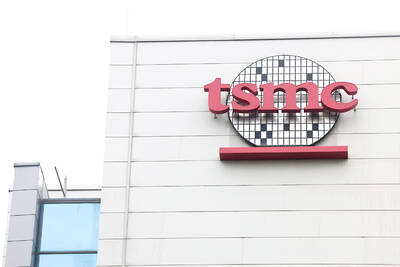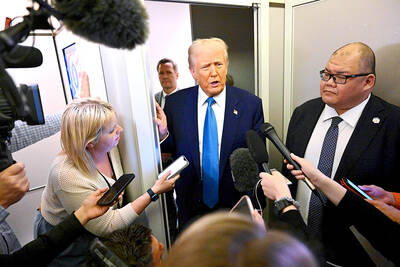One of Germany's showcase pieces of high technology, the high-speed magnetic levitation train "Transrapid," has divided opinion over the years like few other engineering developments.
The train's backers speak of its high speeds in excess of 400kph, as well as a combination of form, function and technology which promises to usher in a new era in transportation.
The Transrapid consortium calls the maglev (magnetic levitation) train the first innovation in railroad engineering since the advent of conventional railroads.
Instead of wheels and rails, the Transrapid, with its "synchronous longstator linear motor", hovers and is propelled forward by powerful electromagnetic forces along a specially-built guideway.
But the maglev's opponents say that the technology, while impressive at first glance, actually dates back to a German patent in 1934. It is one which wastes too much energy, they say, is too loud for the surrounding environment, and is superfluous anyway in view of the ongoing development of conventional high-speed railroads.
Who needs it, the sceptics ask, noting that other countries such as Japan have also developed maglev technology but have yet to put it into commercial use.
In Germany, the debate has been going on since 1984, ever since the first Transrapid prototype began racing around its circular test track in Emsland.
The Transrapid partner companies Siemens and ThyssenKrupp argue that this is a case where the state must shoulder more of the financial burden in the interest of securing jobs and of giving a boost to German-made high technology.
Without a commercial project at home, they argued, it would be difficult, if not impossible, to sell it abroad.
For nearly decade, the public sector and private firms in the Transrapid consortium battled over the costs of a project to link Berlin with the northern port city of Hamburg 250km away.
Initially projected at some DM3.6 billion (US$1.8 billion) in 1992, as the years went by the cost calculations for the Berlin-Hamburg route kept getting more expensive.
By the time the project was finally scuttled, in February 2000, the cost estimates had gone beyond eight billion marks -- well above the 6.1 billion mark economic feasibility limit set by the state.
Now pending in Germany are plans for the "Metrorapid," a Transrapid link between the cities of Dortmund and Duesseldorf, about 60km apart. Again, financing is the main problem.
Amid the domestic squabbling, the Transrapid company reached a deal in early last year with Shanghai Maglev Transportation Development for a 30km link between Pudong International Airport and Longyang Road Station in downtown Shanghai.
In breathtaking speed, the Shanghai Transrapid rail was built under the direction of project director Wu Xiangming. So the honors for the first-ever commercial Transrapid project will go to China, when on Dec. 31, the Shanghai Transrapid takes off on its inaugural "VIP Run" with Chinese Premier Zhu Rongji (
The Shanghai Transrapid has already gone 443kph in test runs.

When an apartment comes up for rent in Germany’s big cities, hundreds of prospective tenants often queue down the street to view it, but the acute shortage of affordable housing is getting scant attention ahead of today’s snap general election. “Housing is one of the main problems for people, but nobody talks about it, nobody takes it seriously,” said Andreas Ibel, president of Build Europe, an association representing housing developers. Migration and the sluggish economy top the list of voters’ concerns, but analysts say housing policy fails to break through as returns on investment take time to register, making the

NOT TO WORRY: Some people are concerned funds might continue moving out of the country, but the central bank said financial account outflows are not unusual in Taiwan Taiwan’s outbound investments hit a new high last year due to investments made by contract chipmaker Taiwan Semiconductor Manufacturing Co (TSMC, 台積電) and other major manufacturers to boost global expansion, the central bank said on Thursday. The net increase in outbound investments last year reached a record US$21.05 billion, while the net increase in outbound investments by Taiwanese residents reached a record US$31.98 billion, central bank data showed. Chen Fei-wen (陳斐紋), deputy director of the central bank’s Department of Economic Research, said the increase was largely due to TSMC’s efforts to expand production in the US and Japan. Investments by Vanguard International

WARNING SHOT: The US president has threatened to impose 25 percent tariffs on all imported vehicles, and similar or higher duties on pharmaceuticals and semiconductors US President Donald Trump on Wednesday suggested that a trade deal with China was “possible” — a key target in the US leader’s tariffs policy. The US in 2020 had already agreed to “a great trade deal with China” and a new deal was “possible,” Trump said. Trump said he expected Chinese President Xi Jinping (習近平) to visit the US, without giving a timeline for his trip. Trump also said that he was talking to China about TikTok, as the US seeks to broker a sale of the popular app owned by Chinese firm ByteDance Ltd (字節跳動). Trump last week said that he had

STRUGGLING TO SURVIVE: The group is proposing a consortium of investors, with Tesla as the largest backer, and possibly a minority investment by Hon Hai Precision Nissan Motor Co shares jumped after the Financial Times reported that a high-level Japanese group has drawn up plans to seek investment from Elon Musk’s Tesla Inc to aid the struggling automaker. The group believes the electric vehicle (EV) maker is interested in acquiring Nissan’s plants in the US, the newspaper reported, citing people it did not identify. The proposal envisions a consortium of investors, with Tesla as the largest backer, but also includes the possibility of a minority investment by Hon Hai Precision Industry Co (鴻海精密) to prevent a full takeover by the Apple supplier, the report said. The group is